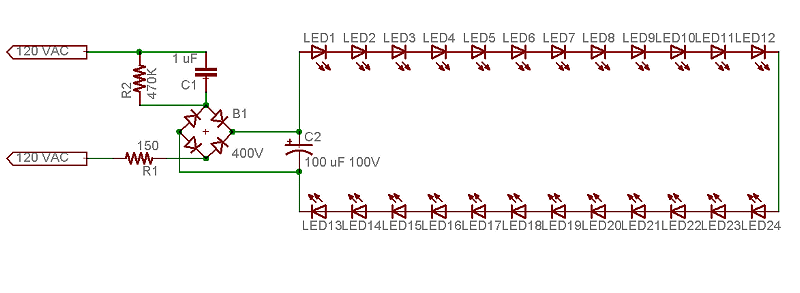Why is that drivers designed specifically for LEDs are constant-current ? AMC7135 etc. If the readily available constant voltage supplies were suitable, no-one would have bothered developing constant current LED drivers to get better power stability.
Missed this one awhile back, otherwise I'd be all over it. Constant current drivers were built for design specific LED arrays where factories in China pump out zillions of beehive fixtures that burn out in six. months and in a universe where 10watts is a lot. I've never blown a power led on a fixed voltage circuit, nor seen one fail. I've killed a shoebox full on fixed current drivers though, not that I advocate designing for such. This myth that power LEDs are hyper sensitive components that freak out and fail at the drop of a 10% current flux is absurd.
At present I've built several LED reef lights + 100watts and lost count at the number of odd ball custom LED designs I've made. Typically I use constant current drivers, most notably MeanWell because of their price / performance ratio. A pair of 48Ds can light a small/medium size reef tank pretty good and provide variable color via external pot, Arduino, etc.
I also have several arrays in place using fixed voltage bricks, and they worked quite well. I'm not some idiot trying to run a 20watt Ebay LED from a 12volt battery. I get 12-24volt 700mA drivers from China for a Dollar, and they have proven to be more reliable, consistent and more durable than Buck-Sucks from LuxDrive. A 35watt / 48volt AC/DC Mean Well costs $17, so it's pointless and a waste of time building my own circuits.
Obviously a current regulated source, particularly a high quality one can deliver greater efficiency, and be design specific. However, current regulated sources suffer from design issues when run in parallel that are very annoying.
So, the best option is simply to design so you don't need parallel runs, but that's easier said than done. As per above, most of the higher end LED drivers are capable of 48volt and higher, which is cool because the higher voltage allows for greater efficiency off mains and longer series runs. They are also mandatory for firing higher voltage Bridgelux emitters.
The down side is a 48volt LED driver throws enough current inrush to stain your underwear and they torch more sensitive 3watt LEDs, specifically rebels. They also short a lot easier than 24volt. I started using Rebels for reef lights, but found it takes half a dozen in series with a Mean Well to buffer current inrush and keep from randomly popping them. So, these current regulated drivers you guys so lovingly endorse start to get not so friendly when driven at +20 watt levels. They'll also give you a hard smack when shorted against your arm. Thermistors are no help with larger circuits because they require massive cooling.
A few years ago I started building high powered 6' rails for a night club, and the owner couldn't decide how many rails he wanted. That meant I couldn't use a fixed current regulated source because I needed additional parallel runs. I could have used a 48D and trimmed the current as I added each parallel run, but any slight mistake and I'd pop all of them. Or, I could have mounted a AC/DC regulated driver to each rail, which would have drastically increased cost and required extensive ceiling rewiring. Or, I could have used a fixed voltage source < 24volts negating conduit requirements and used a DC/DC constant current driver on each rail. That's kind of how on board SMD strips do it.
I ended up just running the 18.5 volt brick to each rail in parallel because at approx 3.1 Vf to each LED the illimunation level is perfect for what he wants and they'll last forever. Been up close to 3 years 24/7 already, which is already better than 75% of the current regulated junk that costs 3x as much and isn't nearly as bright. I could have added a 12/24 DC/DC regulator on each rail, but what the hell for. It would just eat power anyways and raise costs.



